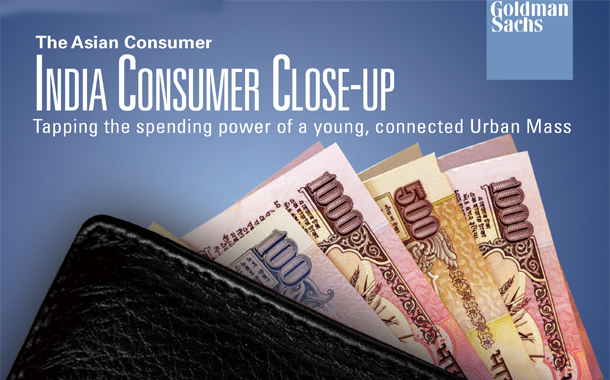The story of the rising Asian Consumer class is incomplete without a solid understanding of India. With a young, tech-savvy population, improved education and rapid growth, India is creating a consumer market deeply tied into mobility and connectivity. Where spending in neighbours like China is driven by an emerging Urban Middle class, there are greatest opportunities in India in the much larger Urban Mass.
In the latest report (Goldman Sachs Research Report – The Asian Consumer – India Consumer Close-up) in the Asian Consumer series, they have examined how India’s unique characteristics create opportunities that range from packaged snacks and restaurants to baby products, smart phones and scooters.
The following are the curetted version of the report with Key takeaways from the report on Indian consumer:
- India’s consumer story will be shaped by its 440mn Millennial and 390mn Gen Z (born after 2000). The sheer size of India’s youth combined with improved education pave the way for sustained growth in purchasing power and makes India’s consumer story one of the world’s most compelling for the next 20 years. The nation’s challenge is to create enough jobs to unleash the productivity of India’s talented youth.
- India’s GDP per capita – at US$1,650 in 2015 – is comparable to China in 2005. In the coming decade, India’s consumer story will be led by its 130mn Urban Mass consumers. This marks a different path from China, which was predominantly an Urban Middle formation story during 2002-2012.
- India’s Urban Middle cohort is small. We estimate that the workforce that falls into the Urban Middle (US$11,000 annual income) stands at 27mn, or 2% of population. It will expand, but investors need to be careful in calibrating the potential addressable market for companies targeting this cohort.
- Brand investing will be a big theme in everything. But be careful: we believe that India’s Urban Mass will trade up into brands that offers the most incremental value, but may not readily jump to aspiration brands. In purchasing a car, for example, India consumer’s first criteria is the brand’s reputation for fuel efficiency.
- Best categories positioned for profit pool expansion: packaged snacks, baby products, premium personal care, scooters, SUVs and jewellery. But one profit pool may grow faster than them all: restaurants.
- Where India will leapfrog the most: Mobile connectivity and Ecommerce. Payment system and supply chain challenges remain but are not insurmountable. Improved mobile connectivity will also challenge the domination of TV as a primary source of household entertainment over time, creating a bigger profit pool for content providers and mobile gaming.
- Growth of luxury and high end in general will be limited. Culturally, India’s affluent consumers tend to shy away from ostentatious display of wealth. One area where Indians do splurge on: weddings. The number of weddings and household formations will increase over the next 5 years, given India’s demographics (peak birth reached 22-23 yrs ago).
















